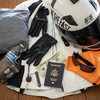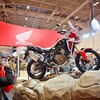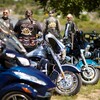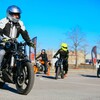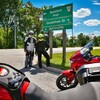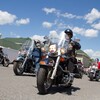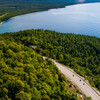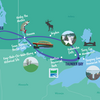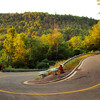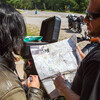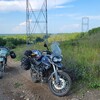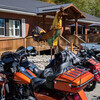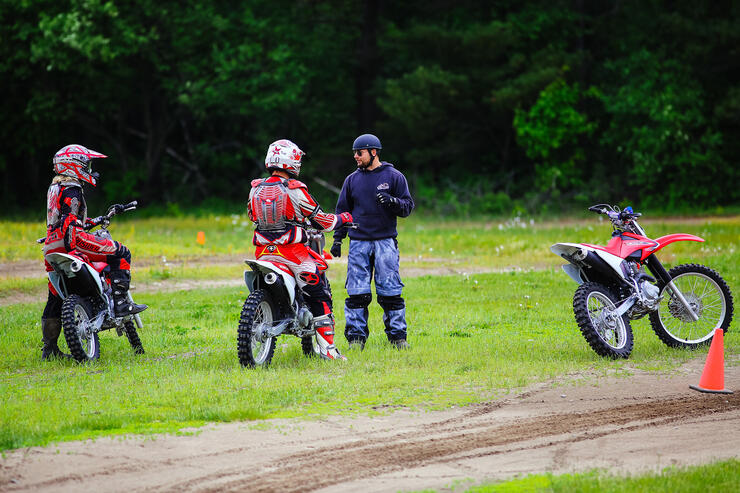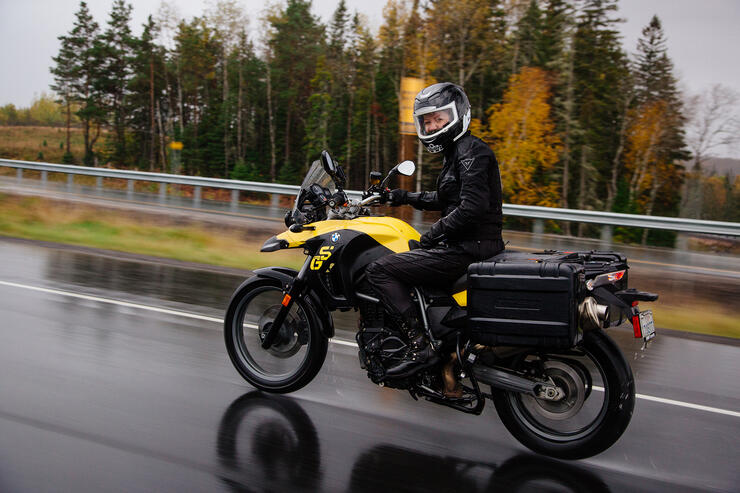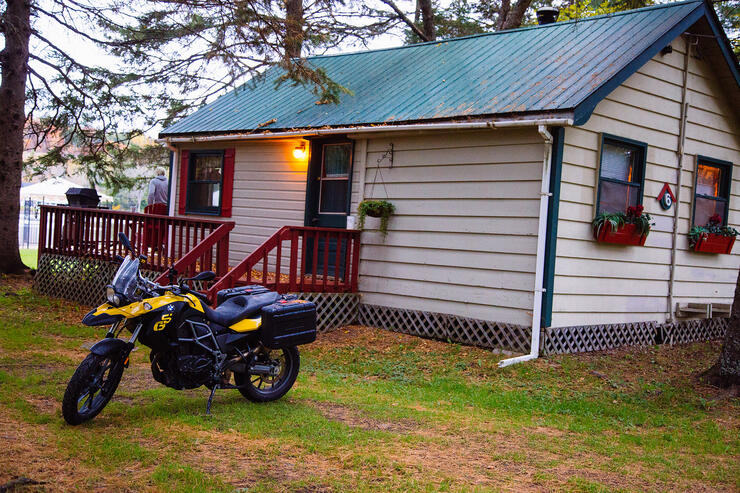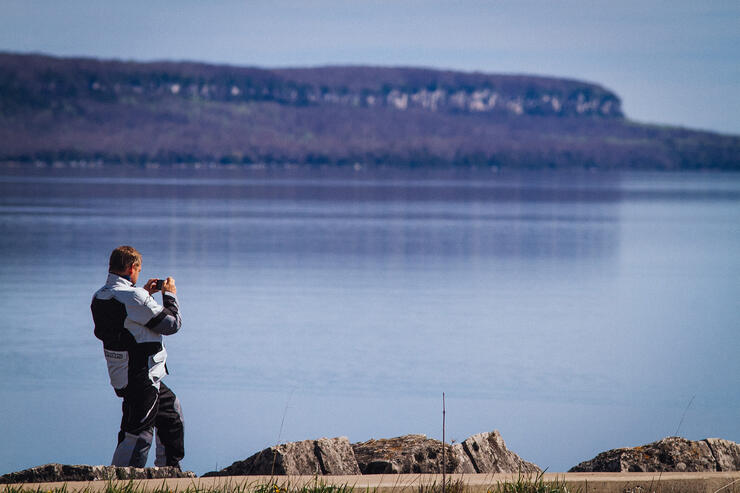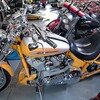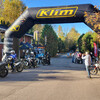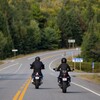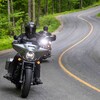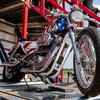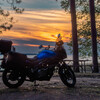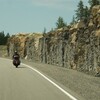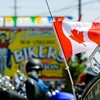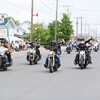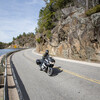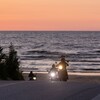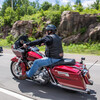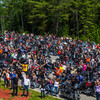
8 Essential Hacks For Your First Motorcycle Tour

A motorcycle vacation can be a unique and cathartic experience, good for the soul while rejuvenating the mind. The freedom one gets from piloting an iron steed through picturesque countryside, with the hot summer sun beating down on your back, is something every red-blooded powersports enthusiast should experience at least once, be it alone, with friends, or a significant other.
Are you a city rider who considers a cruise up to Vaughn Mills Mall a road trip? Perhaps you don’t even own a bike, but have always dreamed of a multi-day ride through Northern Ontario’s vast expanses? If you answered yes to any of these questions then please keep reading, as I’ve compiled a list geared towards you, the newbie, giving away my eight essential hacks to making your first motorcycle touring vacation a success.
8. Choose Your Own Adventure
First, you need to decide what type of ride and vacation you’re after: a weekend tour, a full week and beyond, or perhaps a single day in the dirt doing off-road. Thankfully, all of these options exist and are completely dependent on your comfort level and experience.
If you’ve never ridden a bike, I’d recommend heading out to do an off-road course to start. It will get you familiar with the sensation of riding without the consequences of hard and unforgiving asphalt. There are a couple of good dirt bike schools with competent and patient instructors, for instance Trail Tours in the Peterborough area and SMART Riding Adventures in Barrie. In fact, one of my most memorable trips was documenting a pair of travel bloggers who went from never even riding on two wheels to tackling one of the longest motorcycle tours in North America, and they did this all in one season. Check out that story here.
7. Planning Makes Perfect
Once you figure out the type of tour to ride, you’ll need to plan the perfect route. Ontario is loaded with world-class motorcycle touring, with specific routes mapped out by riders for riders, including all the amenities strategically placed along the way. Everything from accommodations to food to fuel is readily accessible, along some of the most scenic pavement our country has to offer.
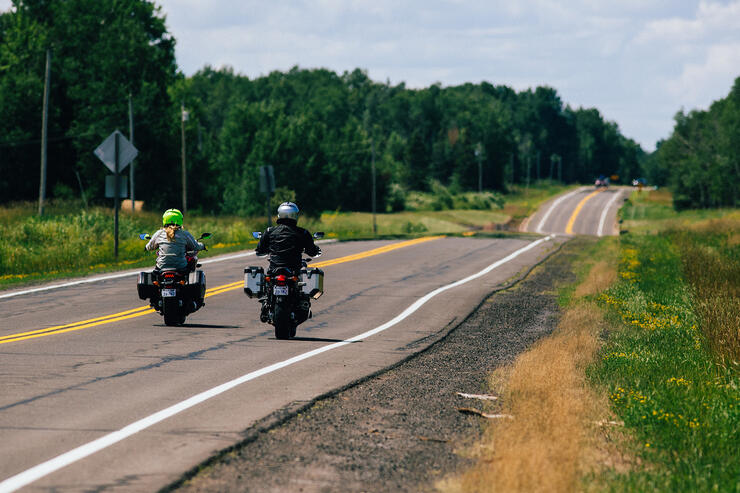
Ontario Tourism offers key resources for the trip planning process in the form of destinationontario.com. It's loaded with handy information, including lists of the most famous and popular routes in Ontario (many of which I’ve ridden and can attest to). Very cool!
6. Dress to Impress
Wearing appropriate attire is of the utmost importance on any motorcycle ride for the sake of safety, but this is especially important when touring. It’s always a good idea to check the forecast ahead of your ride and see what conditions you’re likely to encounter. As we all know, Ontario has a widely varying climate, and the riding in May, July, or September could present you with vastly different conditions.
Let’s assume nice weather is on the horizon; with pleasant temps I’d recommend comfortable riding pants (blue jeans work) a t-shirt if it’s hot (ideally a long sleeve), at least ankle-high boots, and most importantly a good helmet and jacket you feel most comfortable with. Jackets can vary from leather to Kevlar with reinforced padding, but it really depends on personal preference.
Like the jacket, the helmet is largely personal taste, but with protection in mind, a full face with a shield can never be a bad option. In addition to that, packing a rain suit is smart, along with a base layer for extra warmth if needed. Lastly, don’t forget leather or Kevlar gloves. I see a lot of riders going gloveless, and think what it would feel like to be sliding along the asphalt with bare hands.
5. Pack Strategically
This might sound counterintuitive after my last point, but try to bring as little as possible outside of the essentials that you need. Remember, clothes can be laundered at most accommodations, and any essentials you must have, like toiletries, can be purchased in smaller disposable sizes. Most touring motorcycles are made with some form of saddlebag storage or on-bike hard cases, tank bags, or tail storage. If you pack strategically, they should hold everything you need. Backpacks are also an option, but on long-distance rides I wouldn’t recommend them, as they get in the way and can cause back pain.
4. Breaks Save Lives
Riding a motorcycle on long-distance trips is much different than sitting in an enclosed car. It requires much more focus to ride a bike safely, and you use up more energy sitting in an upright position than driving a car.
Don’t think you have to be the hero that racks up 500 km per day—take more breaks and use that time stopped as an excuse to check your phone, snap some photos to post on social media, or just get a good stretch in. If you’re tired, take a 30-minute nap and watch how rejuvenated you’ll feel after. As the saying goes, “Life is about the journey, not the destination.”
3. Back That Up
This one might surprise you, but with the critical role our phones (if you can even call them that now) play in our lives, losing all your irreplaceable data and photos can feel soul-crushing. Before any trip I take where the chances of losing or damaging my phone increase significantly, I always make sure to do a full backup before I hit the road.
2. Don’t DNF
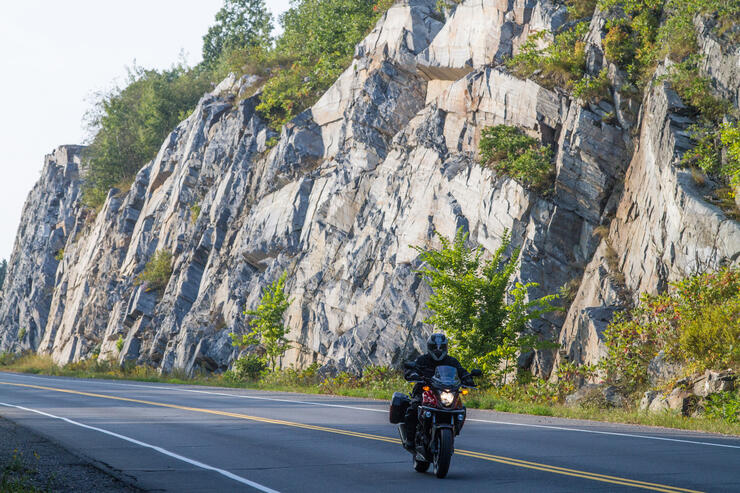
DNF is an abbreviation for Did Not Finish, a term often used in motorcycle racing, commonly associated with mechanical failure. Assuming you own a bike, make sure to bring it to a trusted mechanic and have them do a once-over on everything so it’s deemed road trip-worthy. Have them check the tire tread, change the oil if nothing else, and just perform a visual inspection of your entire bike. Northern Ontario can be a pretty remote place at times in between towns, and breaking down on the side of the road would really put a damper on the trip.
1. Pick My Ride
Motorcycle touring can be anything from the epic Lake Superior Circle Tour to a weekend adventure riding dual sports in the dirt, but every machine is designed for a certain application. Sure, you could ride thousands of kilometres on an adventure bike, but you’d probably burn the motor out and need a year’s worth of chiropractic treatment to fix your wonky back.
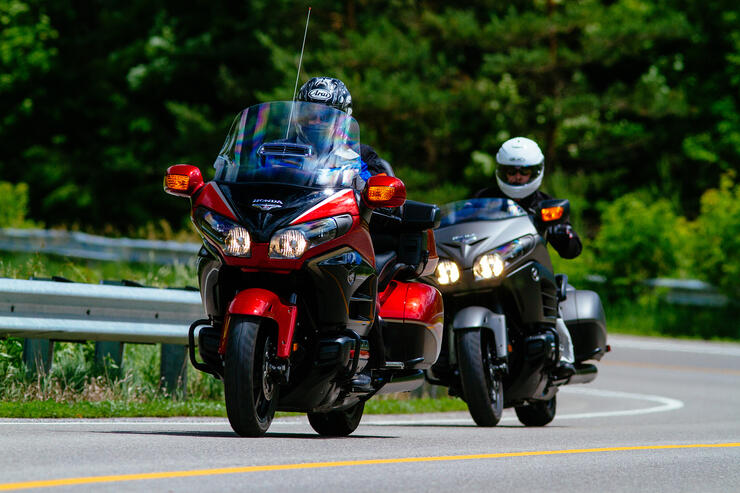
Longer rides justify the larger cruising machines, with seating meant for those journeys—designed with a more relaxed riding position, large windshields, extra luggage storage, cruise control, ample passenger room, large capacity fuel tanks and more. On the other end, smaller lighter bikes (like the “crotch rockets” that many city dwellers own) will work for shorter day tours.
The point is, choosing the right bike for the job is everything. Study the trip planning resources mentioned in points 7 and 8, and pick the right trip for your bike—and if you’re renting, the same theory applies.
It’s all about being prepared, being informed, and always enjoying the journey!
Recommended Articles

Bucket List Motorcycling in Ontario, Canada 2026

Ontario's Best Twisties: Five Roads to Get Your Lean On

The Big Belly Tour—A Complete List of Ontario's BBQ Joints
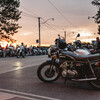
It's Bike Night in Ontario 2024

Ontario's Top Twisties

Have You Ridden Canada's OG Highway? Here's Why Every Rider Needs to Hit Up Historic Highway 2
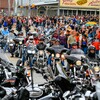
23 Amazing Photos That Prove PD13 Is Still The Best Motorcycle Event Ever

Motorcycle Swap Meets in Ontario—The Complete List for 2025

And a Vespa shall lead them all...


